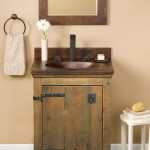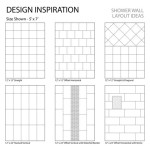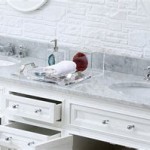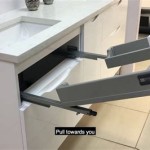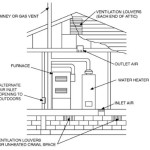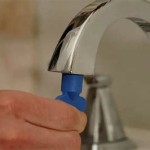Corner Bathroom Sink and Vanity Cabinet CAD Blocks: A Comprehensive Guide
Corner bathroom sink and vanity cabinets represent a strategic solution for optimizing space in smaller bathrooms or powder rooms. Their design allows for installation in the corner of a room, effectively utilizing often-overlooked areas and maximizing available floor space. The creation and utilization of CAD (Computer-Aided Design) blocks for these fixtures offer designers and architects a powerful tool for planning and visualizing bathroom layouts. This article will explore the advantages, considerations, and types of CAD blocks available for corner bathroom sinks and vanity cabinets.
CAD blocks are pre-drawn, reusable components that can be inserted into architectural drawings, significantly streamlining the design process. Instead of repeatedly drawing common elements like sinks, toilets, or furniture, designers can simply insert a CAD block. This saves time, ensures consistency, and reduces the potential for errors. The use of CAD blocks is particularly beneficial in bathroom design, where space constraints and ergonomic considerations are paramount. Accurately represented corner sink and vanity CAD blocks allow for precise placement and evaluation of clearances around other bathroom fixtures.
Furthermore, incorporating CAD blocks allows for better communication between designers, clients, and contractors. When all parties are working with the same standardized blocks, there is less room for misinterpretation of the design intent. This clarity can lead to more efficient construction and fewer costly rework orders during the building phase.
Advantages of Using Corner Bathroom Sink and Vanity Cabinet CAD Blocks
The utilization of CAD blocks for corner bathroom sinks and vanity cabinets provides several distinct advantages, impacting both the design process and the final outcome of the project.
Firstly, the biggest advantage is
increased efficiency in design workflow
. Instead of drawing each component from scratch, designers can readily insert a pre-drawn corner sink and vanity cabinet CAD block into their drawings. This not only saves considerable time but also allows for quicker exploration of different design options and layouts. The ability to quickly manipulate and arrange these blocks helps in optimizing space and achieving the desired aesthetic.Secondly, it provides
improved accuracy and consistency
. CAD blocks are typically created to precise dimensions and specifications, ensuring that the elements they represent are accurately depicted in the drawing. This is especially crucial for corner bathroom sinks and vanity cabinets, where even slight discrepancies in dimensions can lead to problems during installation. Using standardized CAD blocks helps maintain consistency across different drawings within the same project, reducing the risk of errors and ensuring a cohesive design.Thirdly, it allow for
enhanced visualization and presentation
. High-quality CAD blocks often include detailed representations of textures, materials, and finishes, allowing designers to create realistic renderings of the bathroom design. This is particularly helpful when presenting the design to clients, as it allows them to visualize the final product more clearly and make informed decisions. The ability to see the corner sink and vanity cabinet in context, with accurate representation of its dimensions and appearance, enhances client satisfaction and facilitates smoother approval processes.Types of Corner Bathroom Sink and Vanity Cabinet CAD Blocks
Corner bathroom sink and vanity cabinet CAD blocks are available in various styles, materials, and configurations to accommodate different design preferences and functional requirements. A comprehensive understanding of the available types is essential for selecting the appropriate block for a specific project.
2D CAD Blocks:
These blocks provide a two-dimensional representation of the corner sink and vanity cabinet, typically showing a plan view and elevation view. They are primarily used for space planning and dimensioning. While they are less visually detailed than 3D blocks, they are lightweight and easy to manipulate, making them ideal for initial design stages and schematic drawings. 2D CAD blocks commonly depict the outline of the sink and cabinet, indicating the overall dimensions and position of plumbing connections. They are suitable for quick layout planning and determining if the chosen fixture fits within the available space.3D CAD Blocks:
These blocks offer a three-dimensional representation of the corner sink and vanity cabinet, providing a more realistic and detailed visualization. They are typically used in presentation drawings and for generating rendered images. 3D CAD blocks include information about the materials, finishes, and hardware used in the sink and vanity, allowing for a more accurate depiction of the final product. They can be rotated and viewed from different angles, enabling designers to assess the aesthetics of the fixture from all perspectives. 3D blocks are particularly useful for communicating the design to clients and for coordinating with contractors during the construction phase.Dynamic CAD Blocks:
These are advanced types of CAD blocks that allow for parametric changes, such as adjusting the size or configuration of the corner sink and vanity cabinet. This flexibility enables designers to quickly explore different options and customize the fixture to meet specific project requirements. For example, a dynamic CAD block might allow the user to adjust the width of the vanity cabinet, change the style of the door, or select different countertop materials. These blocks are particularly useful for complex projects where customization is essential. However, dynamic blocks often require more computational resources and may slow down the performance of older computers.Key Considerations When Selecting and Using CAD Blocks
Selecting and using the correct CAD blocks for corner bathroom sinks and vanity cabinets requires careful consideration of several factors. Failure to address these considerations can lead to errors, delays, and increased costs.
Firstly,
ensure compatibility and accuracy
. It is crucial to verify that the CAD blocks are compatible with the software being used and that they accurately represent the dimensions and specifications of the actual fixtures. CAD blocks that are poorly drafted or based on inaccurate information can lead to significant problems during installation. Double-checking the dimensions and comparing the CAD block to product specifications is highly recommended. Also, confirm the CAD block's file format (e.g., DWG, DXF) is supported by your CAD software.Secondly,
consider the level of detail required
. The level of detail required in the CAD blocks will depend on the specific application. For initial space planning, simple 2D blocks may be sufficient. However, for presentation drawings and construction documents, more detailed 3D blocks are necessary. Selecting blocks with the appropriate level of detail will help optimize file size and performance without sacrificing accuracy.Thirdly,
manage file size and complexity
. Large, complex CAD blocks can significantly increase the file size of the drawing and slow down the performance of the CAD software. It is important to balance the level of detail with the need for efficient performance. Regularly auditing and purging unused or unnecessary CAD blocks can help keep file sizes manageable. Using CAD block libraries and standardized naming conventions can also improve organization and reduce the risk of duplicating blocks.Furthermore, ensure the CAD blocks adhere to any relevant building codes or accessibility standards. This is particularly important for bathroom fixtures, where compliance with regulations regarding clearances, accessibility, and water conservation is required. Failure to comply with these regulations can lead to delays in permitting and costly rework orders.
Finally, verify the source and reliability of the CAD blocks. Download blocks from trusted sources, such as manufacturers' websites or reputable CAD block libraries. Using CAD blocks from unknown or untrusted sources can expose your system to viruses or malware. Always scan downloaded files with antivirus software before opening them.
In conclusion, the effective use of corner bathroom sink and vanity cabinet CAD blocks is crucial for efficient and accurate bathroom design. By understanding the advantages, types, and considerations discussed in this article, designers and architects can leverage CAD blocks to streamline their workflow, improve communication, and ultimately create better bathroom designs.

Free Bathroom Sinks Bundle Cad Blocks Dwg Dxf Format Cads

Autocad Drawing Vanity Furniture Cabinet Unit Dwg

Corner Bathroom Vanity Set 3d Model Studio 3ds Max Autocad Drawing Files Free Cadnav

Bathroom Cad Blocks Sinks In Plan And Elevation View

Autocad Drawing Bathroom Vanity Furniture Dwg

Washbasin Free Cad Blocks Autocad Models In Plan

Washbasin Free Cad Blocks Autocad Models In Plan

Kitchen Cad Blocks Sinks In Plan And Elevation View

Curved Vanity Unit Autocad Dwg

Washbasin Free Cad Blocks Autocad Models In Plan
Related Posts

